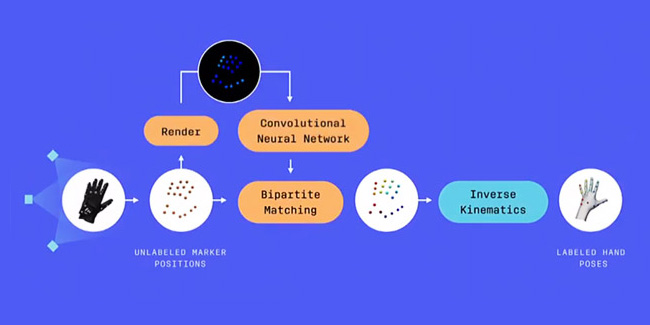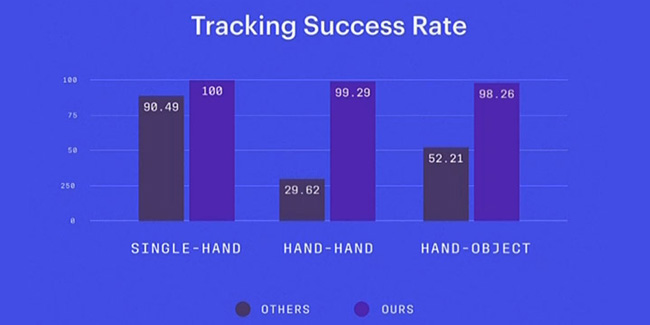Oculus' Next-Generation Hand-Tracking Technology Uses Artificial Intelligence
At Facebook’s F8 developer conference this week, Oculus shared a glimpse at some of the work being done internally on advanced hand-tracking, powered by artificial intelligence (AI) that can track and learn to recognize hand patterns in real-time to bring more precise and intuitive interaction to virtual reality.
Oculus’ head of Core Tech product management, Maria Fernandez Guajardo, talked on stage to F8 attendees about a computer vision-based system that incorporates artificial intelligence to deliver advanced hand-tracking capabilities.
According to Fernandez Guajardo, this advanced tracking technology is capable of producing “far more accurate than any method before for tracking a single hand, two hands, and hand-object interactions.”

In order for this method to work the company used a marker-based motion capture system to record and collect the data from hand movements and complex interactions, which is then simplified into a 2D image and passed through a convolutional neural network called ‘deep marker labeling’. The self-learning AI algorithm can then utilize this data to identify the position of markers across a vast array of ‘labeled hand poses’ to effectively track and produce the natural motion of the hand and finger articulation with higher accuracy and better immersion in a virtual environment.

Oculus believes that leveraging techniques from machine learning allows its new method of hand-tracking to be far more accurate than any other method that has come before it. The company claims to have achieved an impressive 100% success rate when it comes to single hand-tracking, 99.29% success rate in two-hand tracking, and a 98.26% success rate in hand-object tracking. As shown in the graph above, both two-handed and hand-to-object tracking shows a significant leap compared to other method solutions.
In addition to hand-tracking, other major advancements that the company teased at F8 include a new prototype headset, codenamed ‘Half Dome’, with a 140-degree field of view and varifocal display, as well as advances in the 3D reconstruction of rooms and environments, photorealistic avatars animated in real-time, among other innovations.
There is no word on when we may see these types of new technologies trickle down to a consumer product, but it’s clear that Oculus is making a lot of progress with its research and development to bring the future to the present.
